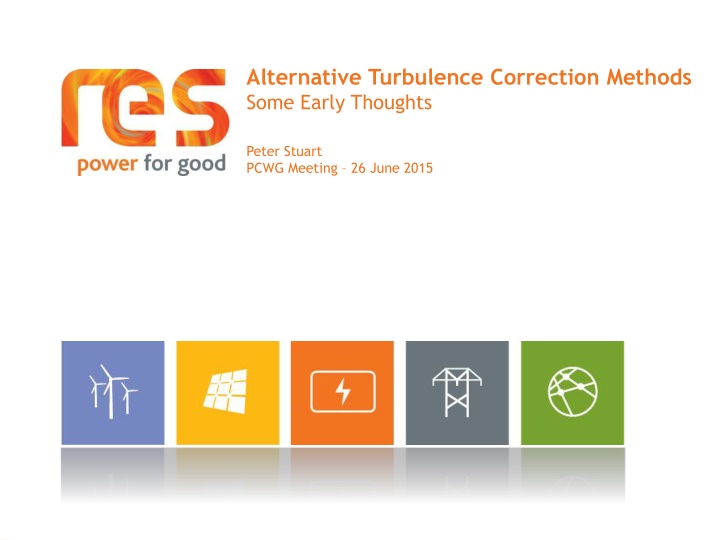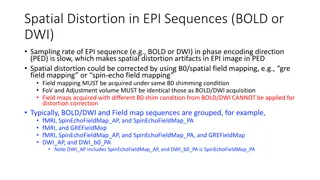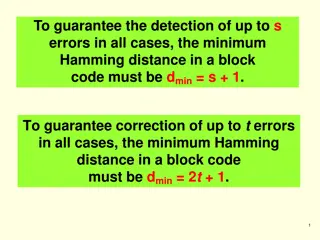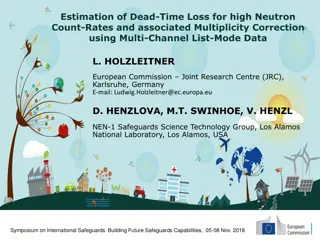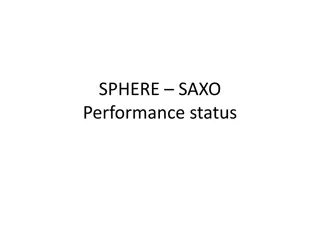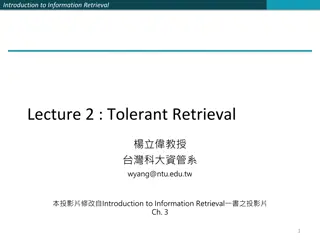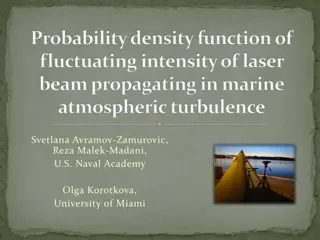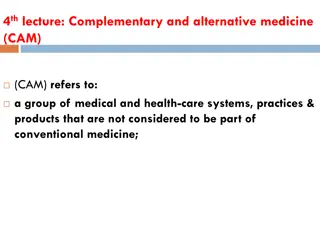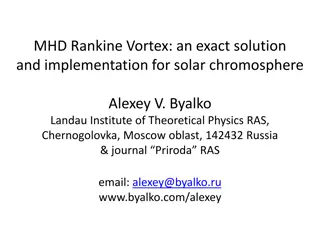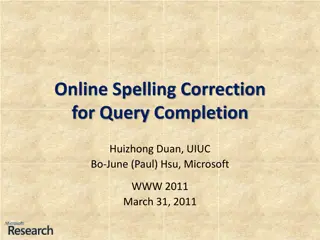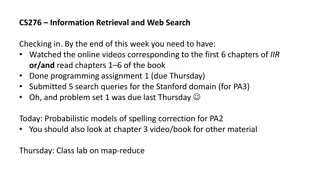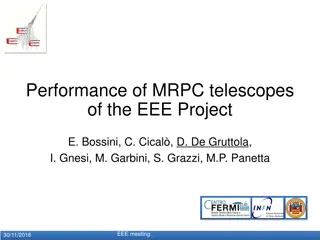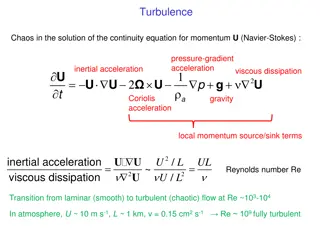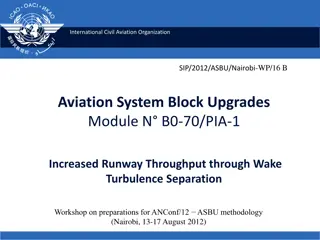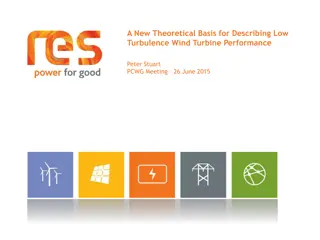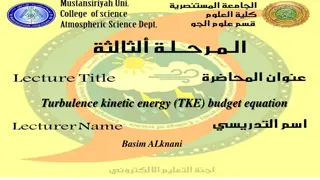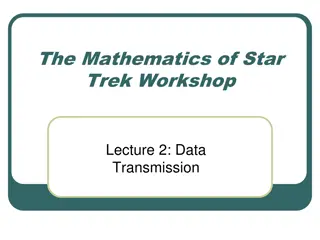Alternative Turbulence Correction Methods: Early Thoughts
Peter Stuart shares insights on alternative methods for correcting turbulence in wind power generation, including a power curve simulation concept and zero turbulence power curve hypothesis. The discussion delves into modifying IEC turbulence correction techniques and behavior analysis of zero turbulence power curve at the knee. Find out more in the provided details.
Download Presentation

Please find below an Image/Link to download the presentation.
The content on the website is provided AS IS for your information and personal use only. It may not be sold, licensed, or shared on other websites without obtaining consent from the author.If you encounter any issues during the download, it is possible that the publisher has removed the file from their server.
You are allowed to download the files provided on this website for personal or commercial use, subject to the condition that they are used lawfully. All files are the property of their respective owners.
The content on the website is provided AS IS for your information and personal use only. It may not be sold, licensed, or shared on other websites without obtaining consent from the author.
E N D
Presentation Transcript
Alternative Turbulence Correction Methods Some Early Thoughts Peter Stuart PCWG Meeting 26 June 2015 1
Modified IEC Turbulence Correction
Power Curve Simulation Method Concept: a simulation method which can generate a power curve at any required turbulence. Note: as said previously the simulated power at a given turbulence is trusted to define a correction (from one turbulence to another), but not trusted to defined the absolute value at given turbulence. Hypothesize: that we can define a zero turbulence power curve which gives the instantaneous power of a wind turbine. Instanteous? Wind? Speed? 10-minute? Average? Wind? Speed? Zero Turb Power Illustration of instantaneous wind speed. Turbulence Intensity = Std Dev / Mean (of instantaneous values) Wind Speed Assume: the power output perfectly follows the zero turbulence power curve for each instantaneous wind speed value. Note: we will explain later how to calculate the zero turbulence power curve.
Power Curve Simulation Method Don t worry we haven t explained how to derive the zero turbulence power curve yet (we ll do this later) Starting Point: A zero turbulence power curve Values of wind speed and turbulence intensity End Point: Simulated power at a given power curve and turbulence intensity In place of using instantaneous wind speed values we assume that the variation of wind speed within the ten minute period is described by a normal distribution as follows: Mean = 10-minute Wind Speed Mean Std Dev = (10-minute Wind Speed Mean) * (10-minute Turbulence Intensity) Zero Turbulence Power Normal Distribution (for 10minute period) Interpolate the zero turbulence power curve at every wind speed in the probability distribution (0 to 100m/s in 0.1m/s steps) Take the sum product of the interpolated probability distribution and the interpolated zero turb power values: Zero Turb Power Probability Simulated Power =
Behaviour of Zero Turbulence Power Curve at the Power Curve Knee At the power curve knee turbulence causes the 10-minute average power to fall below the zero turbulence (instantaneous) power (knee degradation) Zero Turb Power 10-minute average wind speed value Turbulence (variation in instantaneous wind speed) 10-minute average power value Wind Speed In the above illustration the 10-minute average value is exactly at the rated wind speed of the zero turbulence curve. Therefore half of the ten minute period is at rated power and half below rated power. Hence the ten-minute average power is less than the rated power. Note: mathematically speaking we can say this behaviour is because the second derivative of the power curve at the knee (with respect to wind speed) is negative.
Behaviour of Zero Turbulence Power Curve at the Power Curve Ankle At the power curve ankle turbulence causes the 10-minute average power to be above the zero turbulence (instantaneous) power. Zero turbulence power Zero Turb Power 10-minute average wind speed value Turbulence (variation in instantaneous wind speed) 10-minute average power value Wind Speed The above effect is essentially the inverse of the knee behaviour. Note: mathematically speaking we can say this behaviour is because the second derivative of the power curve at the ankle (with respect to wind speed) is positive.
Overview of Impact of Applying Turbulence Correction (Resource Assessment Context) = (Simulated Power at Site Turb) - (Simulated Power at Reference Turb) Correction Inflection Wind Speed High Ankle Knee Positive Correction (Performance Gain) Negative Correction (Performance Degradation) Turbulence Reference Turbulence Positive Correction (Performance Gain) Negative Correction (Performance Degradation) Low Low Wind Speed High
IEC Turbulence Correction The fundamental premise of the Turbulence Correction defined in the current draft of IEC61400-12-1 is that a correction can defined as follows: PTarget_TI = PRef_TI + P P = STarget_TI - SRef_TI where: P is the power S is the simulated power For more details and worked examples of this method please visit www.pcwg.org 8
IEC Turbulence Correction > Zero Turbulence Curve The simulated power is calculated using a zero turbulence power curve . We can express the turbulence correction as: Using the functional notation (whereby square brackets denote an input function) P = STarget_TI[Z] - SRef_TI[Z] An initial guess is made of the zero turbulence power curve (ZInitial) based upon the CPMax, cut-in wind speed and rated power of the reference turbulence power curve. The final zero turbulence power curve is then calculated by deriving a correction to take the reference turbulence power curve to the target turbulence using the initial zero turbulence power curve ZFinal = PRef_TI +( STarget_TI[ZInitial] - SRef_TI[ZInitial]) 9
Proposed Relaxation Factor Validation of the Turbulence Correction has both demonstrated its effectiveness and identified some shortcomings.). One key observation is the tendency for overcorrection of the knee of the power curve in high turbulence. The proposed modified method attempts to adjust the performance by introducing a relaxation factor : P = (1+a) (STarget_TI[Z] - SRef_TI[Z]) 10
Relaxation Factor P = (1+a) (STarget_TI[Z] - SRef_TI[Z]) where a is a step function of both turbulence intensity and wind speed a a1 a2 a3 a4 TI Wind Speed U > USaddle U > USaddle U < USaddle U < USaddle Range TI < TILower TI > TIUpper TI > TIUpper TI < TILower (High Turbulence, High Speed) (Low Turbulence, High Speed) (High Turbulence, Low Speed) (Low Turbulence, Low Speed) where a1, a2, a3 & a4 are fitted to observations. 11
Low TI Empirical Extra Correction
Introduction Observed wind turbine performance Existing correction methods (REWS and IEC Turbulence Correction) do not fully describe behaviour at low/medium wind speeds and low turbulence. Measured Power Deviation Matrix: Deviation vs TI and Wind Speed 13
IEC Turbulence Correction The proposed correction attempts to describe the residual correction necessary after the Rotor Equivalent wind speed (REWS) and Turbulence Correction (Renormalisation) methods have been applied. The methodology involves the following quantities. x = xsaddle x t = (treference t) / treference where: x = windspeed xsaddle = turbine saddle (inflection) wind speed i.e. somewhere between cut-in and rated. t = site turbulence treference = power curve reference turbulence 14
Proposed Correction The loss is then calculated as follows: IF x >0 and t >0 ELSE x = xsaddle x t = (treference t) / treference loss = A*x + B loss = 0 T where: A = -2% * tanh(2t ) B = -3% * (e3/2t -1) Value A vs data (fitted) B vs data (fitted)
